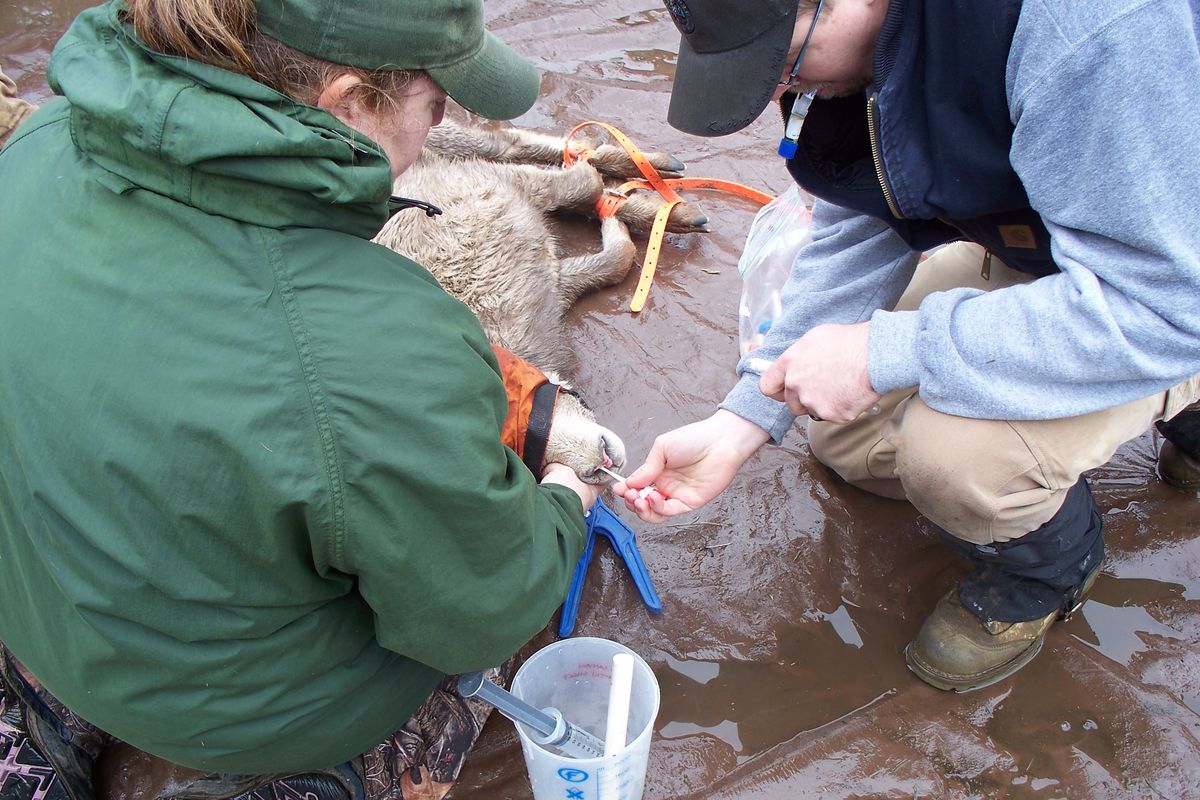Success story: Hells Canyon bighorn sheep healthy through research, testing

LEWISTON – Frances Cassirer has been working to recover bighorn sheep in Hells Canyon for more than two decades.
During that time, she wondered if it was possible to find a cure, a vaccine or a management protocol that would protect the wild sheep from a deadly and highly contagious respiratory disease.
“There were times where I was like, ‘I don’t think I can pick up any more dead lambs.’ It’s too depressing,” she said. “On the other hand, it also sort of motivated me – ‘I have to do something about this. This is terrible.’ ”
It appears she and a team of other researchers, wildlife biologists and game managers from Idaho, Oregon and Washington have found a way to help infected herds in the greater Hells Canyon region regain their health.
“Where we are now is that we have healthy populations almost everywhere in Hells Canyon and the Blue Mountains. It’s awesome,” said the wildlife researcher for the Idaho Department of Fish and Game at Lewiston and Washington State University at Pullman. “There is no pneumonia. There is no mycoplasma. It’s not present.”
The exception is a herd in the Wallowa Mountains of northeastern Oregon that has yet to shed the chronic and deadly illness. But the fact that the rest of the herds are free of pneumonia and the bacteria that causes it is quite remarkable.
The iconic animals are loved by sightseers and hunters alike. The males grow massive horns that make full curls in front of their heads. During mating season, the males smash their horns together in contests of dominance that produce riflelike cracks.
Many hunters spend their adult lifetimes trying to draw the once-in-a-lifetime tags that give them the right to hunt the animals. But there are many more hunters than tags, and the odds of drawing are steep. Wealthy hunters sometimes spend hundreds of thousands of dollars to purchase tags at auctions that raise money for disease research.
Bighorn sheep are found in many of the West’s steep and arid river canyons and mountain ranges. Almost everywhere they are found, so is pneumonia. Introduced by domestic sheep and goats, the disease, along with habitat degradation and overhunting in the early part of the 20th century, has taken a heavy toll on the native species.
The greater Hells Canyon region, with a wild sheep population between 800 and 900 animals, once had many thousands of bighorns, perhaps 10,000 or more, according to some estimates. Those numbers dropped dramatically after settlers began using the canyon’s grassy slopes to graze their domestic animals. The animals were eventually extirpated from the canyon and reintroduced, starting in the 1970s.
The threat of the disease had not gone away, however, and pneumonia swept through many of the Hells Canyon herds in 1996, killing about 300 animals. Since then, mortality from the illness, while less dramatic, has persisted and prevented the herds from growing.
Cassirer said sheep that survive the disease become immune. An infected herd can eventually work its way through the illness. She and other researchers said that rarely happened. Instead, they were finding that years after outbreaks, the disease continued to take a toll.
She theorized that there were carriers within the herds, likely ewes, that were infecting their own lambs, and then those lambs would pass the illness to other lambs through play. If they could test the herds and remove the carriers, perhaps they could stop the spread.
She likened it to New York health authorities identifying a cook named Mary Mallon, better known as Typhoid Mary, as a carrier of typhoid in the early 1900s. Mallon was quarantined as part of an effort to halt the spread of the illness.
Wildlife officials from Idaho, Oregon and Washington, who work collaboratively to manage sheep, tried the same thing, starting with the Asotin herd that lives along Asotin Creek. It worked, so they expanded to other herds.
“We had some different approaches in different populations, but in general we tested and we defined a carrier as an animal that was positive over two years on two tests,” Cassirer said.
Those that met the definition were removed.
“We just kept testing, and everywhere,” she said. “Except for one population, even though we had animals testing positive, when we came back the next year, they weren’t positive anymore. So there weren’t any carriers, and eventually we weren’t finding any positives at all.”
Finally, some of the herds are showing signs of growth, with more and more lambs surviving.
“People going up the river have been telling me they are seeing a lot more sheep and a lot more lambs,” she said. “I think there is a big enough difference for people to detect casually.”
Cassirer said preparations are underway to expand the testing and removal strategy to herds along the Salmon River above Riggins. At the same time, wildlife managers are working diligently to prevent the disease from being reintroduced to the Hells Canyon herds. That could happen from domestic animals or from infected wild sheep, such as those from the Wallowa Herd, visiting other herds.
“We are really concerned about that and it getting back into the rest of the sheep,” she said. “That is a really high priority.”
The three states have developed an outreach program in which they contact owners of domestic sheep and goat herds near occupied bighorn habitat. They offer to test the domestic herds so the owners know if their animals carry the disease.
“If they do have sheep or goats test positive, we talk to them about what options they might have to clear it from their herds, and if they don’t have it, that is good to know too,” she said.